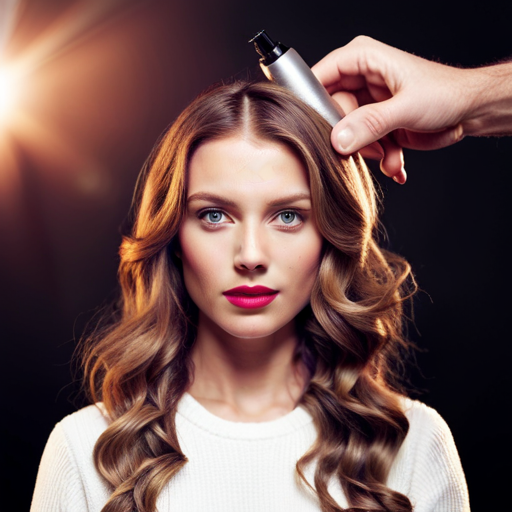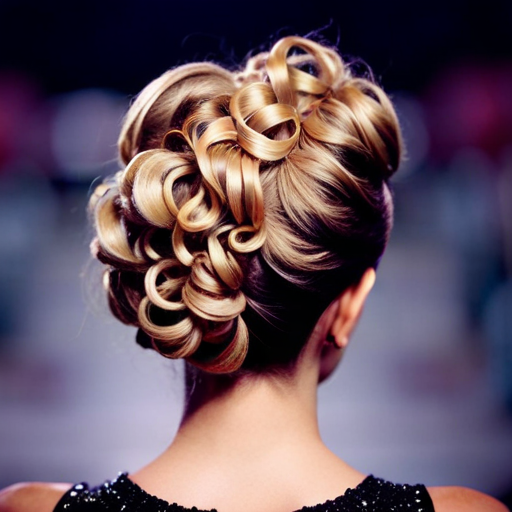Hairstyle Practice Routines for Perfect Execution

Unlock the secrets to flawless hairstyling with our comprehensive guide on perfecting your execution.
As the saying goes, practice makes perfect, and our expertly crafted practice routines will elevate your skills to new heights.
From mastering the basics to advanced styling mastery, this article will equip you with the precision, control, and creativity needed to achieve impeccable hairstyles every time.
Whether you’re a seasoned stylist or a budding enthusiast, this guide is essential for honing your craft.
Mastering the Basics
To master the basics of hairstyling, it is essential to focus on foundational techniques, practice strategies, fundamental skills, and training methods.
Foundational techniques form the cornerstone of hairstyling, encompassing skills such as sectioning, braiding, and blow-drying.
Practice strategies involve consistent repetition and the use of mannequins or models to refine techniques.
Fundamental skills, such as understanding hair textures and mastering basic cutting and styling methods, are crucial in honing one’s hairstyling abilities.
Training methods should involve seeking mentorship, enrolling in hairstyling courses, and staying updated with the latest trends and techniques in the industry.
Precision and attention to detail are paramount in mastering the basics of hairstyling. They ensure that the foundational techniques are executed with accuracy, resulting in polished and professional results.
The subsequent section will delve into the importance of precision and control in hairstyling, highlighting how these attributes elevate the quality of hairstyling execution.
Precision and Control
When it comes to achieving perfect execution in hairstyling, hand movement precision and maintaining stylistic control are crucial elements.
Precision in hand movements ensures that each section of hair is treated with accuracy and consistency.
Stylistic control allows for the creation of the desired look with finesse and accuracy.
These points are key components in the pursuit of flawless hairstyle execution.
Hand Movement Precision
For optimal hairstyling results, mastering hand movement precision is essential. This involves honing finger dexterity and maintaining wrist stability to ensure smooth and controlled movements. Hand-eye coordination is crucial for accurately translating creative vision into the actual styling process.
Additionally, developing muscle memory through consistent practice enables stylists to perform intricate maneuvers with ease and confidence. Implementing strategic hand movements not only enhances the stylist’s efficiency but also contributes to the client’s overall experience, ensuring a seamless and enjoyable styling session.
-
Finger dexterity and wrist stability are fundamental for precise and controlled hairstyling.
-
Hand-eye coordination plays a vital role in accurately translating creative vision into hairstyling techniques.
-
Developing muscle memory through consistent practice enables stylists to perform intricate maneuvers with ease and confidence.
-
Implementing strategic hand movements enhances both the stylist’s efficiency and the client’s overall experience.
Maintaining Stylistic Control
Maintaining precise and controlled hairstyling necessitates honing the ability to execute intricate techniques with finesse and expertise. To maintain consistency and stylistic adaptability, hairstylists must focus on perfecting their skills through regular practice and dedication. This involves mastering various styling tools and understanding how different hair types and textures require specific approaches. Additionally, staying updated with the latest trends and techniques is crucial for ensuring stylistic control. The table below provides examples of practice routines that can help in maintaining precision and control in hairstyling.
| Practice Routine | Purpose |
|---|---|
| Perfecting basic haircuts | Enhances precision in fundamental hairstyling |
| Experimenting with new styles | Develops stylistic adaptability and creativity |
| Practicing intricate braiding | Improves control and precision in detailed work |
| Studying hair texture | Enhances understanding of different styling needs |
Speed and Efficiency
Achieving speed and efficiency in hairstyling practices requires a meticulous approach and consistent refinement of techniques. Time management is crucial for maximizing productivity during hairstyling sessions. Stylists should establish a structured practice routine to optimize their time and ensure that each step is completed efficiently. Practice efficiency is enhanced through the use of time-saving tools and techniques, such as prepping hair before the client arrives and multitasking when possible.
Rapid execution is a key factor in achieving speed without compromising quality. Stylists should aim to perform each step with precision and confidence, minimizing hesitations and unnecessary movements. This not only saves time but also contributes to flawless results. Utilizing ergonomic tools and maintaining good posture can help reduce fatigue, allowing stylists to work swiftly without sacrificing quality.
Incorporating time-saving shortcuts into hairstyling routines can significantly improve efficiency. This may include mastering quick styling techniques for different hair types and textures, as well as familiarizing oneself with efficient product application methods. Additionally, staying organized and maintaining a clean workspace can prevent time wastage and ensure a smooth workflow.
Perfecting Updos
To enhance speed and efficiency in hairstyling practices, incorporating meticulous techniques and consistent refinement, perfecting updos becomes a crucial focus for stylists. Mastering updo variations allows for the creation of elegant twists and intricate styles that are essential for formal events and special occasions. Stylists need to familiarize themselves with a wide range of updo variations, from classic chignons and French twists to modern messy buns and sleek top knots. Each updo style requires precise sectioning, twisting, and pinning techniques to achieve a polished and secure look. Understanding the principles of symmetry and balance is also vital when perfecting updos, as it ensures that the hairstyle complements the client’s features and attire.
Moreover, mastering the art of updos involves continuous practice and refinement. Stylists should dedicate time to perfecting their techniques, experimenting with different textures and lengths of hair to develop versatility in creating updo styles. By honing their skills in perfecting updos, stylists can expand their repertoire and offer clients a diverse range of elegant hairstyles for various occasions.
Transitioning to creative braiding techniques, stylists can further elevate their hairstyling expertise by incorporating intricate braided elements into updo styles, adding depth and dimension to their creations.
Creative Braiding Techniques
One essential step in mastering creative braiding techniques is understanding the fundamental principles of various braid styles and their applications in hairstyling. Innovative braid styles offer a fresh take on traditional braiding methods, allowing for unique and eye-catching designs. These styles often incorporate elements such as twisted rope braids, fishtail braids, and intricate weaving techniques to achieve a modern and artistic look.
-
Fishtail Braids: This style involves weaving together small sections of hair to create an intricate and visually appealing braid that resembles the tail of a fish.
-
Twisted Rope Braids: By twisting two sections of hair in opposite directions and then crossing them over each other, this technique creates a rope-like braid that adds texture and dimension to the hairstyle.
-
Waterfall Braids: These braids involve incorporating a cascading technique, where sections of hair are dropped to create a flowing, ‘waterfall’ effect within the braid.
-
Dutch Braids: Also known as inverted or inside-out braids, Dutch braids are created by crossing the hair sections under rather than over, resulting in a braid that appears to sit on top of the rest of the hair.
Working With Different Textures
When it comes to hairstyling, working with different textures requires specific techniques to achieve the desired look.
From fine and straight to thick and curly, understanding how to adapt to diverse textures is crucial for perfect execution.
This subtopic will explore texture-specific techniques and the importance of adapting to various hair textures for flawless results.
Texture-Specific Techniques
Texture-specific techniques are essential for hairstylists to master in order to effectively work with a variety of hair textures. Understanding the nuances of each hair texture allows hairstylists to execute hairstyles with precision and finesse.
When it comes to creating textured waves, understanding the use of different curling techniques is crucial. Creating beachy waves requires the skillful use of a variety of texturizing products and tools.
For curly updos, mastering techniques such as finger coiling and twist-outs is essential. These techniques help to enhance and define the natural curl pattern, resulting in a beautiful and intricate updo.
Additionally, for sleek ponytails, the ability to smooth and tame different textures is vital. This may involve using smoothing products, heat styling tools, and techniques such as blow-drying or flat ironing to achieve a sleek and polished look.
By adapting to diverse textures, hairstylists can cater to the unique needs and preferences of their clients. This versatility allows them to create hairstyles that are tailored to each individual, enhancing their natural beauty and confidence.
Now, let’s delve into the next section about adapting to diverse textures.
Adapting to Diverse Textures
To effectively work with diverse hair textures, hairstylists must possess a comprehensive understanding of the unique characteristics and demands of each texture. Adapting styling techniques to diverse hair types requires a keen eye for detail and a versatile skill set.
For example, curly hair may require different cutting and styling techniques compared to straight hair. It’s essential to be proficient in working with a variety of textures, including coarse, fine, wavy, and kinky hair.
Understanding how different textures react to various styling methods is crucial for achieving optimal results. By adapting techniques to suit diverse hair types, hairstylists can ensure that every client receives a personalized and tailored approach to their hairstyling needs.
This adaptability is a hallmark of a skilled and versatile hairstylist, setting the stage for advanced styling mastery.
Advanced Styling Mastery
Mastering advanced hairstyle techniques requires precision, creativity, and an understanding of diverse hair types and textures. To achieve advanced styling mastery, stylists must continuously refine their skills and stay updated with the latest trends and techniques. Here are some key aspects to focus on for achieving advanced styling mastery:
-
Innovative Updos: Experiment with intricate updo styles that push the boundaries of traditional updos. Explore asymmetrical designs, incorporating braids, twists, and elegant bun variations.
-
Texture Manipulation: Master the art of manipulating different hair textures to create visually stunning styles. This involves adeptly working with curly, straight, wavy, and kinky hair to achieve the desired look.
-
Precision Cutting: Advanced styling often involves intricate cutting techniques to create unique shapes and dimensions. Perfecting precision cutting is essential for achieving flawless and avant-garde hairstyles.
-
Creative Color Techniques: Incorporate advanced coloring techniques such as balayage, ombre, and color melting to enhance the overall look of intricate hairstyles.
Frequently Asked Questions
Can Practicing Hairstyle Techniques Help Improve My Overall Hairdressing Skills?
Practicing hairstyle techniques can significantly improve overall hairdressing skills by enhancing precision, creativity, and control. Regular practice allows mastery of techniques, leading to increased confidence and proficiency in executing various hairstyles.
How Can I Maintain Precision and Control While Working With Different Hair Textures?
Maintaining precision and control when working with different hair textures is essential for hairstyling mastery. Curly hair techniques require specific finesse, while straight hair styling demands exactness. Texturized hair practice hones expertise.
Are There Specific Techniques for Achieving Speed and Efficiency in Hairstyling?
Efficiency in hairstyling involves mastering speed techniques and refining workflow. Understanding hair textures and styles is key to achieving precision and control. Utilizing ergonomic tools and maintaining a well-organized workstation can significantly enhance efficiency.
Can Practicing Updos and Braiding Techniques Help Me Become More Creative With My Styling?
Practicing updos and braiding techniques can significantly enhance styling creativity by fostering updo innovation and braid experimentation. Mastery of these techniques can provide a strong foundation for developing innovative and creative hairstyling.
What Are Some Advanced Styling Tips That Can Elevate My Hairstyling Skills to the Next Level?
Elevate your hairstyling skills to the next level with advanced texture manipulation. Creative updos and braiding techniques can serve as the cornerstone for developing proficiency and creativity in achieving intricate and sophisticated hairstyles.
Conclusion
In conclusion, hairstyle practice routines are essential for achieving perfect execution. By mastering the basics, honing precision and control, and working on speed and efficiency, stylists can perfect their updos, creative braiding techniques, and work with different textures.
This advanced styling mastery will help them elevate their skills and create stunning looks for their clients. Like a well-oiled machine, consistent practice and dedication will ensure flawless and effortless hairstyling.





